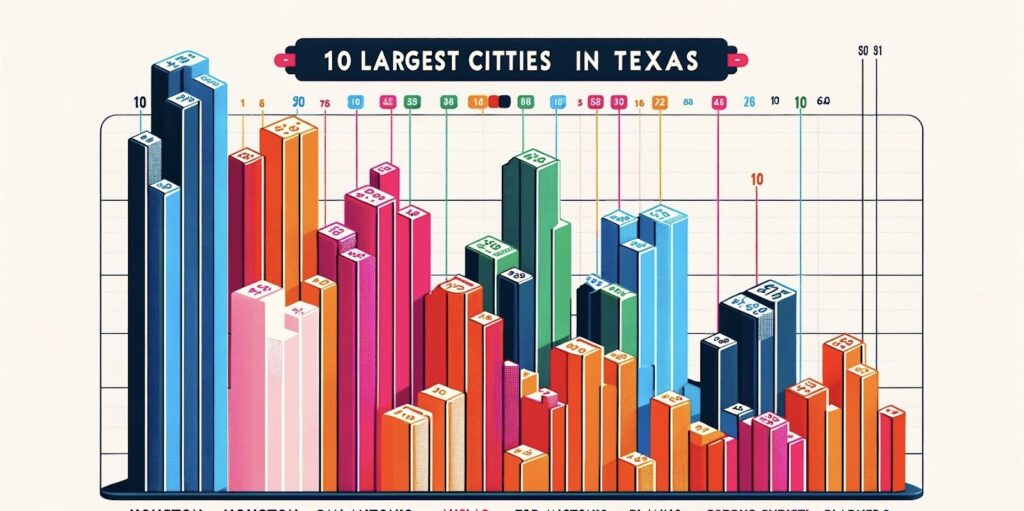
Texas, the Lone Star State, is renowned for its vast landscapes, diverse culture, and thriving urban centers. With a resident population of 29,145,505, it stands as the second-most populous state in the United States, following California and preceding Florida. The state has experienced rapid population growth since the turn of the twenty-first century, leading to the emergence of numerous vibrant cities and metropolitan areas. Among these, several stand out as the largest population centers in the state, each contributing uniquely to Texas’ rich tapestry. This article delves into the ten largest cities in Texas by population, exploring their significance, demographics, and cultural impact.
1. Houston – 2,345,606
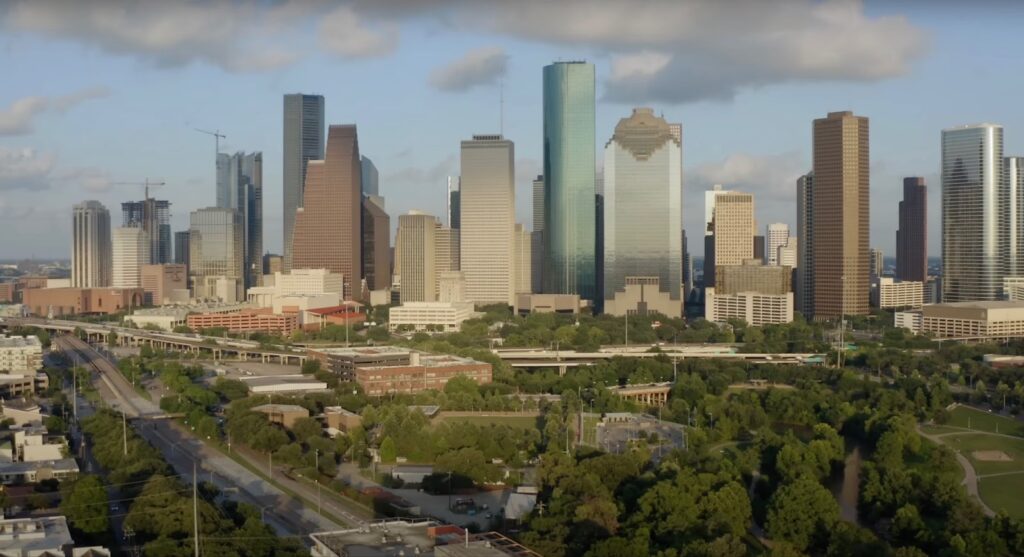
Houston, a sprawling metropolis in Southeast Texas near the Gulf of Mexico and Galveston Bay, serves as the seat of Harris County. As Texas’ largest city and the fourth largest in the United States as of 2024, Houston boasts an estimated population of 2,325,324. The city’s population has grown by 1.78% since the most recent census, expanding at a rate of 0.88% annually. Covering an area of approximately 672 square miles, Houston maintains a population density of 3,664 people per square mile.
Demographics
The demographic landscape of Houston reflects its status as a melting pot of cultures. With a diverse populace, the city embraces a rich blend of ethnicities, languages, and traditions. According to recent data, Houston’s population comprises a mosaic of individuals from various racial and ethnic backgrounds, contributing to the city’s vibrant and inclusive atmosphere.
Economic Impact
As a major economic hub, Houston plays a pivotal role in various industries, including energy, healthcare, aerospace, and manufacturing. Its robust economy and business-friendly environment have attracted a multitude of corporations and entrepreneurs, fostering innovation and growth. The city’s dynamic job market and entrepreneurial spirit continue to draw professionals seeking diverse career opportunities.
2. San Antonio – 1,456,069
Alt: San Antonio City
San Antonio, a city steeped in history and culture, stands as one of Texas’ most prominent urban centers. With a population of 1,456,069, it ranks as the second-largest city in the state. Known for its iconic landmarks, vibrant arts scene, and rich heritage, San Antonio continues to attract residents and visitors alike, contributing to its steady population growth.
Cultural Heritage
San Antonio’s cultural fabric is woven with influences from its Spanish, Mexican, and American roots, creating a unique blend of traditions and customs. The city’s historic sites, such as the Alamo and the River Walk, serve as enduring symbols of its rich past, drawing tourists and history enthusiasts from around the world.
Urban Development
The city’s ongoing urban development initiatives have enhanced its appeal, offering a mix of modern amenities and preserved historical landmarks. San Antonio’s commitment to sustainable growth and infrastructure improvements underscores its dedication to providing a high quality of life for its residents.
3. Dallas – 1,325,691
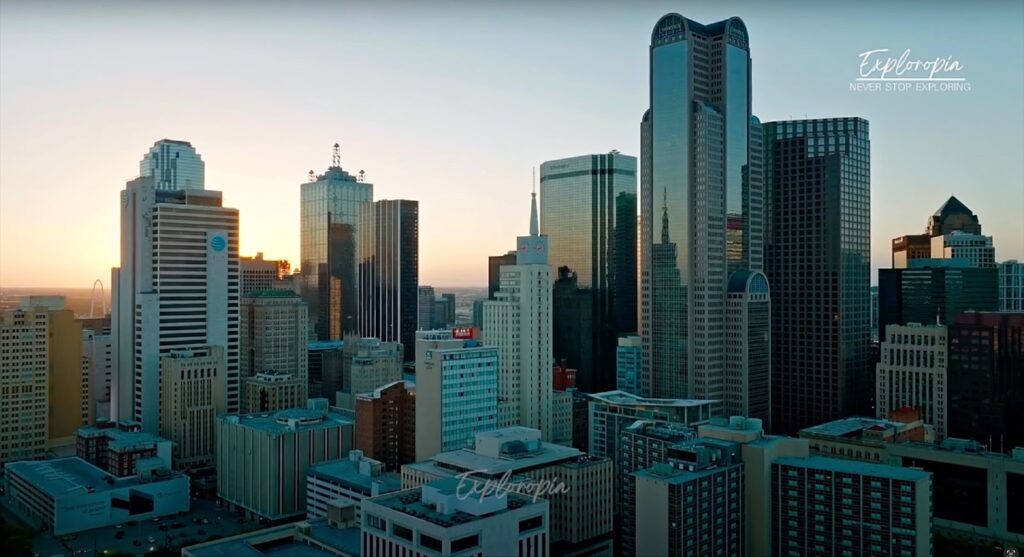
Dallas, a bustling metropolis in North Texas, stands as the third-largest city in the state, boasting a population of 1,325,691. Renowned for its thriving business community, cultural offerings, and diverse neighborhoods, Dallas continues to be a magnet for individuals seeking a dynamic urban experience.
Business and Innovation
Dallas’ robust economy and pro-business environment have positioned it as a hub for corporate headquarters, startups, and technological innovation. The city’s entrepreneurial spirit and investment in technology have contributed to its reputation as a center for cutting-edge industries and emerging technologies.
Arts and Culture
The city’s vibrant arts scene, encompassing museums, theaters, and galleries, reflects its commitment to fostering creativity and artistic expression. Dallas’ diverse cultural landscape offers a wealth of opportunities for residents and visitors to engage with a wide array of artistic endeavors.
4. Austin – 996,147
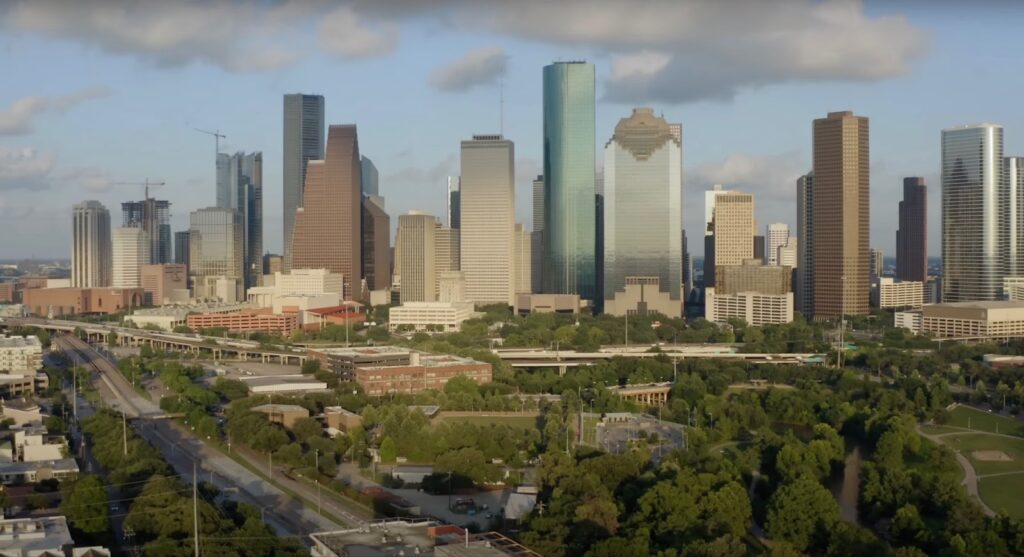
Austin, the capital of Texas, has emerged as a vibrant and progressive city, attracting a population of 996,147. Renowned for its live music scene, tech industry, and outdoor recreational opportunities, Austin embodies a unique blend of cosmopolitan flair and natural beauty.
Technology Hub
Austin’s status as a burgeoning technology hub has earned it the moniker “Silicon Hills,” reflecting its growing influence in the tech sector. The city’s supportive ecosystem for startups and established tech companies has fueled innovation and entrepreneurship, contributing to its economic vitality.
Cultural Fusion
Austin’s eclectic mix of cultures and creative communities has shaped its identity as a cultural melting pot. The city’s festivals, culinary scene, and artistic events showcase its diverse heritage and contemporary artistic expressions, fostering a dynamic and inclusive environment.
5. Fort Worth – 954,457
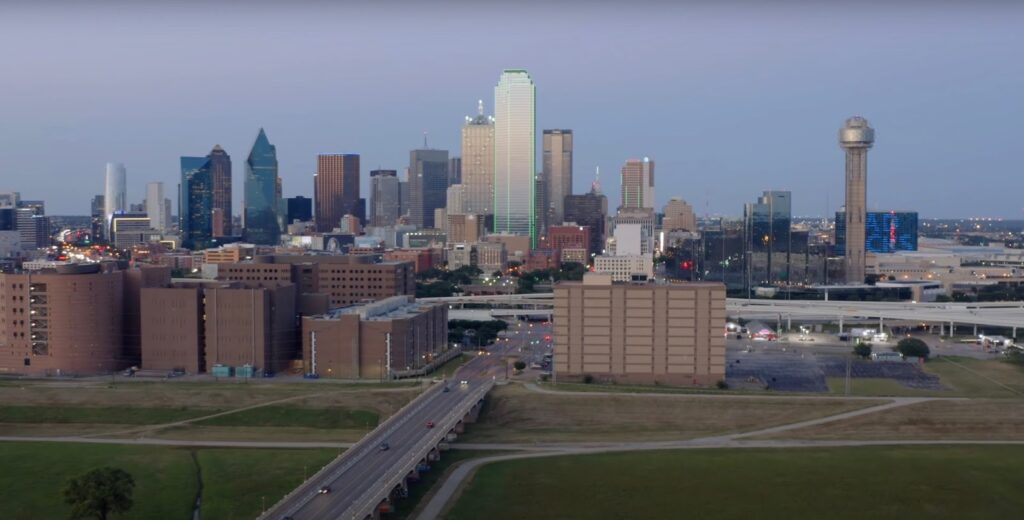
Fort Worth, a city known for its Western heritage and modern amenities, boasts a population of 954,457, making it the fifth-largest city in Texas. With a rich history rooted in cattle ranching and trade, Fort Worth has evolved into a thriving urban center with a strong emphasis on arts, culture, and commerce.
Western Legacy
Fort Worth’s deep ties to its Western legacy are evident in its cultural institutions, such as the Stockyards National Historic District and the annual Fort Worth Stock Show and Rodeo. These attractions celebrate the city’s cowboy heritage, offering residents and visitors a glimpse into its storied past.
Arts and Entertainment
The city’s commitment to the arts is exemplified by its renowned cultural district, home to world-class museums, theaters, and performance venues. Fort Worth’s flourishing arts and entertainment scene provides a diverse array of experiences, catering to a broad spectrum of cultural interests.
6. El Paso – 684,753
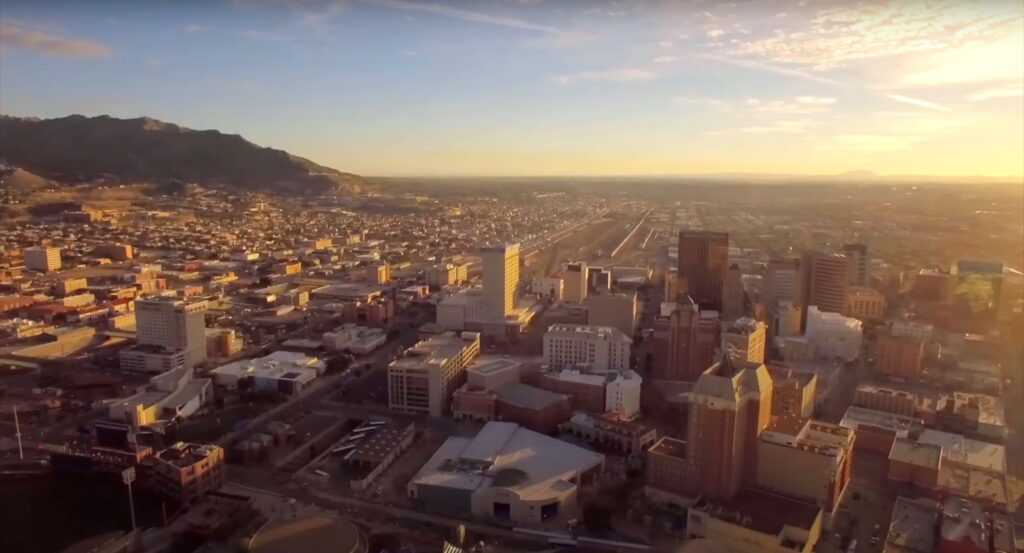
El Paso, situated on the western tip of Texas, is a vibrant border city with a population of 684,753. Recognized for its rich multicultural heritage and scenic desert landscapes, El Paso serves as a gateway between the United States and Mexico, fostering a unique blend of traditions and influences.
Cross-Cultural Influence
El Paso’s proximity to Mexico has shaped its cultural landscape, resulting in a fusion of Mexican, American, and indigenous influences. The city’s culinary offerings, festivals, and arts reflect this rich tapestry of traditions, creating a vibrant and inclusive community.
Economic Vitality
El Paso’s strategic location and thriving economy have positioned it as a vital trade and logistics hub. The city’s cross-border trade and industrial sectors contribute significantly to its economic prosperity, driving employment opportunities and commercial growth.
7. Arlington – 400,032
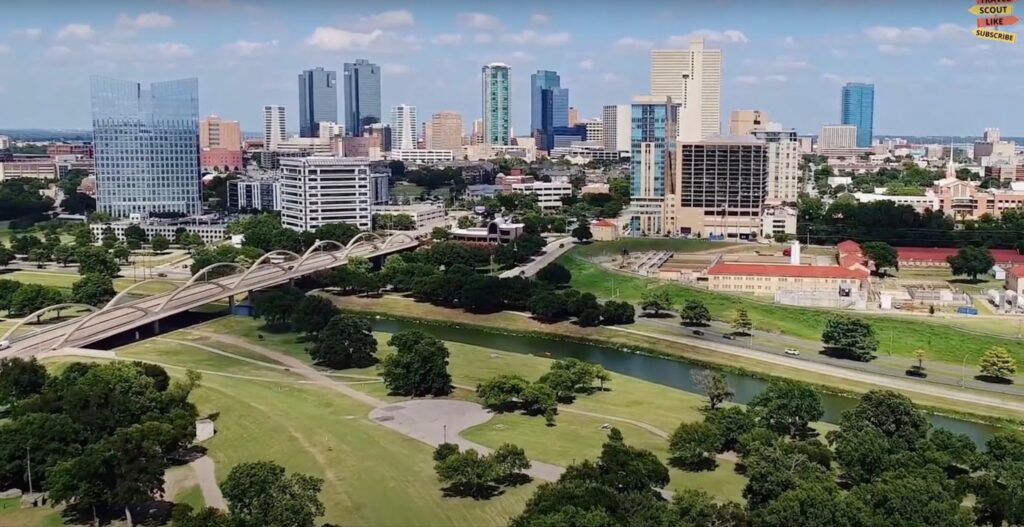
Arlington, a city nestled between Dallas and Fort Worth, is home to a population of 400,032, making it a significant urban center in the Dallas-Fort Worth metroplex. Renowned for its sports venues, entertainment districts, and diverse neighborhoods, Arlington offers a dynamic and welcoming environment for residents and visitors.
Sports and Recreation
Arlington’s status as a sports destination is underscored by its world-class stadiums, including AT&T Stadium and Globe Life Field. These venues host major sporting events and entertainment spectacles, contributing to the city’s reputation as a premier destination for sports enthusiasts.
Community Engagement
Arlington’s commitment to community engagement and civic involvement is evident in its diverse array of cultural events, festivals, and neighborhood initiatives. The city’s emphasis on inclusivity and collaboration fosters a sense of belonging and unity among its residents.
8. Corpus Christi – 320,393
Alt: Corpus Christi City
Corpus Christi, a coastal city nestled along the Gulf of Mexico, is home to a population of 320,393. Known for its picturesque beaches, vibrant waterfront, and maritime heritage, Corpus Christi offers residents and visitors a unique blend of coastal living and cultural experiences.
Coastal Charm
Corpus Christi’s scenic coastline and bountiful outdoor recreational opportunities make it a sought-after destination for beachgoers and nature enthusiasts. The city’s emphasis on preserving its natural beauty and marine ecosystems contributes to its allure as a coastal paradise.
Maritime Legacy
The city’s maritime legacy is celebrated through its museums, waterfront attractions, and annual events, highlighting its deep connection to seafaring traditions and naval history. Corpus Christi’s maritime heritage serves as a source of pride and inspiration for its residents.
9. Plano – 290,624
Alt: Plano City
Plano, a thriving city in North Texas, is home to a population of 290,624, reflecting its status as a vibrant suburban community with a strong emphasis on economic development and quality of life. Renowned for its safe neighborhoods, exemplary schools, and diverse cultural offerings, Plano continues to attract new residents and businesses.
Economic Prosperity
Plano’s robust economy and business-friendly environment have positioned it as a hub for corporate headquarters and technological innovation. The city’s strategic focus on economic diversification and talent attraction has fostered sustained growth and prosperity.
Family-Friendly Environment
Plano’s family-friendly amenities, including parks, recreational facilities, and educational resources, contribute to its reputation as an ideal place to raise a family. The city’s commitment to providing a high quality of life for its residents is reflected in its well-planned neighborhoods and community programs.
10. Irving – 264,762
Alt: Irving City
Irving, a city located in the heart of the Dallas-Fort Worth metroplex, is home to a population of 264,762. Recognized for its diverse cultural landscape, corporate presence, and accessible location, Irving offers residents a dynamic and inclusive community with a range of amenities and opportunities.
Corporate Hub
Irving’s strategic location and business-friendly environment have attracted a multitude of corporate headquarters and professional services, contributing to its economic vibrancy. The city’s diverse industry sectors and skilled workforce have solidified its position as a key player in the regional economy.
Multicultural Enrichment
Irving’s multicultural fabric is evident in its diverse neighborhoods, culinary scene, and cultural events, reflecting a blend of international influences and local traditions. The city’s commitment to promoting diversity and inclusion enhances its social fabric and fosters a sense of unity among its residents.
Texas Population Charts
The following chart displays Texas growth per year from 1900 to the present.
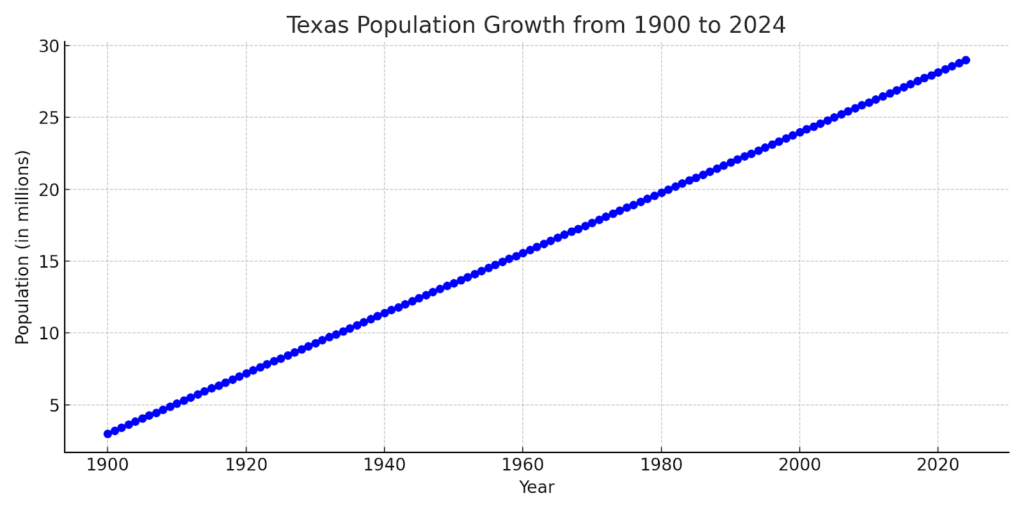
Texas Population Size vs All 50 States
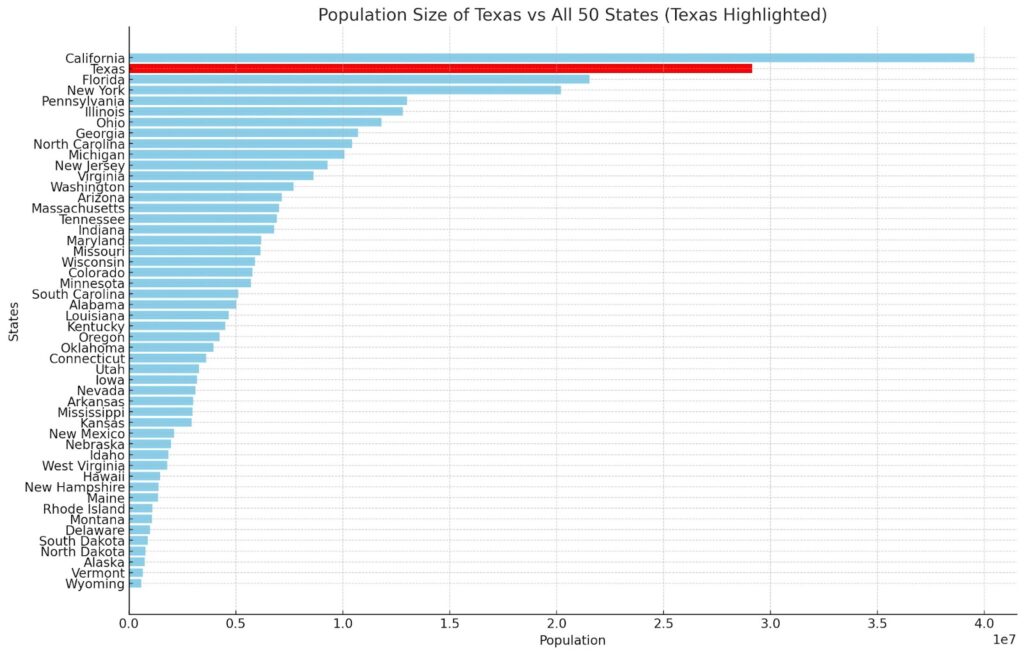
Conclusion
In conclusion, the ten largest cities in Texas represent a tapestry of vibrant communities, each contributing to the state’s cultural, economic, and social landscape. From the bustling metropolis of Houston to the historic charm of San Antonio, and from the innovative spirit of Austin to the Western heritage of Fort Worth, these cities embody the essence of Texas’ diversity and dynamism. As the state continues to evolve and grow, these urban centers stand as beacons of progress, opportunity, and inclusivity, shaping the future of Texas and leaving an indelible mark on the fabric of American society.
Last modified: February 29, 2024

